Tribes And Heritage of Eastern India
Welcome to India, or as we say ‘Atithi Devo Bhava’ (The guest is an incarnation of God). Thank you for giving us the opportunity to serve you!!
Late afternoon arrival, meeting and assistance upon arrival as our representatives welcome you and transfer to hotel, Lalit.
Whilst the room keys and check-in is organized, our representative would introduce the tour to you and hand over the documents to you.
Evening is at leisure. Your hotel is in downtown Delhi. You may choose to make independent walks through the Connaught Place area under the arches and columns that represent a living legacy of the British Raj. There are shops, pavement stores and restaurants that are very popular with the locals. You might enjoy mingling with the locals and get a feel of the local culture.
Overnight at Lalit, Delhi (Deluxe Room) (No Meals)
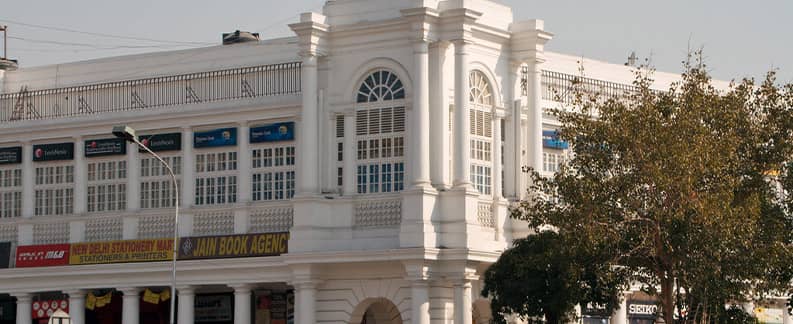
Morning, we will transfer to the airport to board the flight to Guwahati.
Meeting and assistance upon arrival, as our representative will welcome you and from here, we will drive to Kaziranga.
Upon arrival, check in to hotel, Infinity Lodge.
Overnight at Infinity Lodge, Kaziranga (Luxury Lake Facing Room) (B & D)
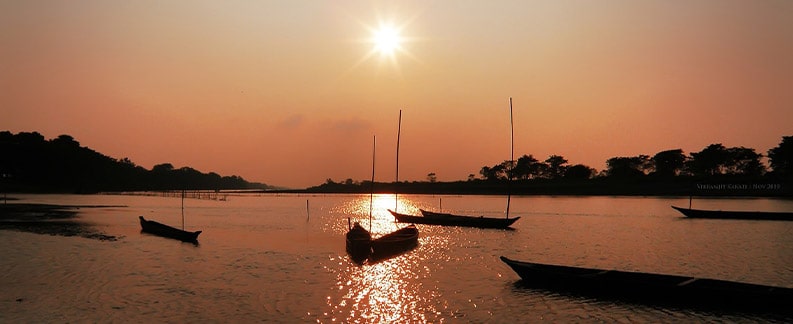
We proceed for morning and afternoon, jungle excursion in the open top vehicle in Kaziranga National Park. The visit in this park enables one to experience the wetland ecosystem with its tall wet grassland and giant plant-eating animals – mega herbivores such as the Rhino and Asian Elephant. The adaptation of various endemic birds and mammals to this unique and constantly changing ecosystem can be witnessed. With over 490 species being recorded in the Park, Kaziranga is an ideal place for bird watching. The visit in the park enables one to concentrate on wildlife activity. Guides and drivers (who have worked with international wildlife film crews, ornithologists and botanists) constantly go into the Park and are best informed about recent sightings and whereabouts. They will help you to plan your activities. The frequent and prolonged sightings of animals such as the Rhino, Wild Buffalo, Swamp Deer and Elephant give fantastic opportunities to the photographer. The lush landscape, which remains green throughout the year, is an ideal backdrop.
Overnight at Infinity Lodge, Kaziranga (Luxury Lake Facing Room) (B, L & D)
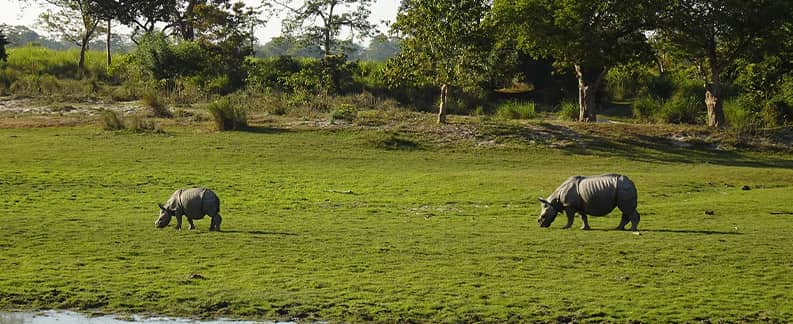
Morning, we will drive to Shillong.
Upon arrival we will check in to hotel, Rosaville. RaibahadurKanaklalBarua, a prominent citizen of Assam, built a lodge in the popular neo-colonial style of the times and after his daughter - Rosa - that the Rosaville lodge was named. Rosaville Lodge was a home, but a prestigious home of an illustrious man. The nostalgia of a grander past, when a cup of evening tea retained all the flavour of a ceremony rather than an ordinary ritual lingers still in the décor, be it the furniture from the colonial times or the family memorabilia in the hallways.
This evening, we will visit the exciting ‘Police Bazaar’. A walk in the brightly little ‘Police Bazar’ streets is a must for witnessing the highly fashion-conscious beauties of Shillong. Walking down its enchanting roads, rather than driving around, is the way to experience the true essence of Shillong, like exchanging pleasant “Khubleis” with the betel nut stained, pretty Khasis carrying babies on their backs.
Overnight at Rosaville, Shillong (Deluxe Room) (B)
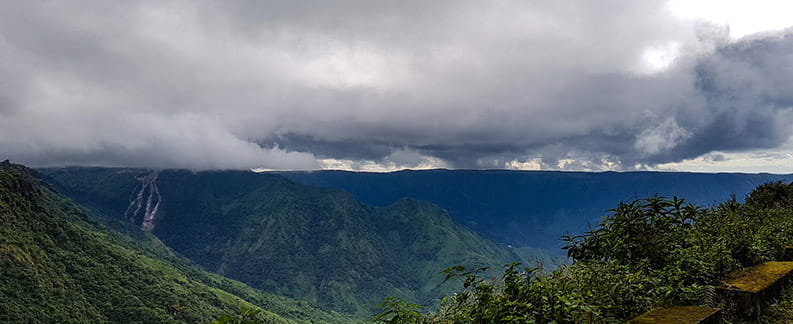
Following a leisurely breakfast we proceed on a full day tour of Shillong - the capital of Meghalaya, where the clouds reside, or the abode of heavens, is what aptly describes this small town - now almost a city. Here, we will visit the various attractions including the Wards Lake, one of the most popular attractions of Shillong, Then, we will visit the Don Bosco Museum where you will get a glimpse of the rich and multi-cultural lifestyles of the indigenous peoples of North East India (Closed on Sunday), and the magnificent Elephanta Falls which is situated at the outskirts of the main city of Shillong. The unique part of these falls is that, it is a two-tier waterfall set in the dingles of the rocks.
Following the tour, we return to the comforts of our resort where the night comes on suddenly and with great stealth. Gazing down the hills, you can witness the mesmerizing sight of millions of fireflies lighting up the mountains. One takes back the image of a charmingly, refreshing place where the orange blossoms vie with the forget-me-nots and tiny children in their blazers walk up the lovely streets.
Overnight at Rosaville, Shillong (Deluxe Room) (B)
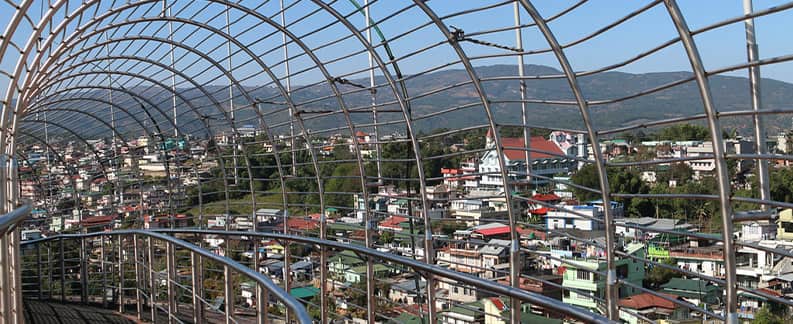
This morning we will proceed on a day’s excursion to Cherrapunji. If the British could twist their tongue a little, there would have been no Cherrapunji on the face of this planet. Cherrapunji, at an altitude of 3,000-4,607 feet above sea level, is the wettest place on earth, and, would have been known by its original name Sohra, which the British rolled into “Churra,” the name gradually morphing into Cherrapunji. The drive from Shillong is spectacular as you ride through undulating hills and green meadows. Also, you would feel as if you were walking through clouds than traveling in a car. Anywhere the eyes went, there was fog, and the hills were so green that it felt as if the gods had dropped all other hues from their palette when creating Meghalaya. Providing stark contrast were the megaliths’ brown pieces of unadorned rocks standing upright on hilltops, on flat land and in the courtyard of typical traditional houses. These stone memorials standing for hundreds of years are in honor of ancestors. No names are etched on them, no drawings, no epitaphs, just bare rocks and memories. The drive would also offer you opportunities to experience traditional lives and villages unchanged for centuries. Please do not mistake red ribbon-like strips hanging on a clothesline for laundry left to dry. Closer inspection would reveal that these could be slices of meat drying in the sun! You would also notice signs advertising “Genuine Orange Flower Honey,” This is because Cherrapunji is famous for its oranges and honey made from its flowers.
We visit the Thangkharang Park, from where one could see bare outlines of Bangladesh. It is serene and lush, but the park is known more for its greenhouse than anything else. It houses rare orchids and the utterly gorgeous insectivorous pitcher plant. The lady’s slipper orchid gets its name from, well, a lady’s slipper. Its labellum looks so delicate that you want to slip your feet in. And, yes, the pitcher plant; forget everything else and look at the plant that traps insects inside its elegant frame. Some of the pitchers are so big that they could swallow a sparrow! Not too far from here is the Mawsmai Cave, the only fully lit cave in the state. The cave is gorgeous and a miracle of nature. The waterfalls including the Seven Sister Falls, Nahkhalikai Falls, Dainthelen Falls, lakes are a major attraction of the place. You would also enjoy walks along the town making contacts with the locals. Their genuineness will touch you.
Following the tour of Cherrapunji, we will drive back to our hotel in Shillong
Overnight at Rosaville, Shillong (Deluxe Room) (B)
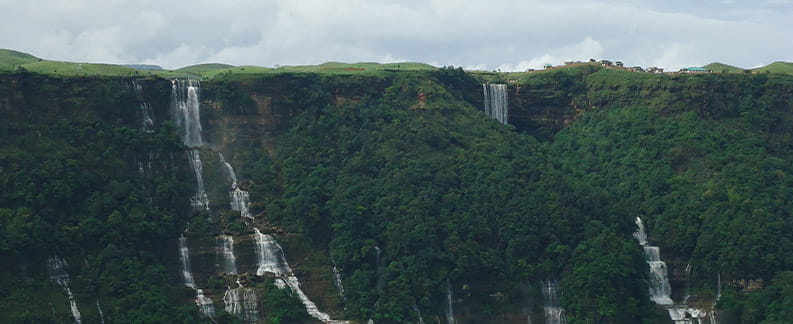
Full day excursion to Mawlynnong (known for its cleanliness) The village offers scenic natural beauty, a trek to the living-root bridge at village Riwai. Here you can see natural balancing rock. You will have time to explore a local remote village. Also, visit the Dawki border between India and Bangladesh. Here you can enjoy a country boat ride on Umngotriver (famous for crystal clear water).
Overnight at Rosaville, Shillong (Deluxe Room) (B)
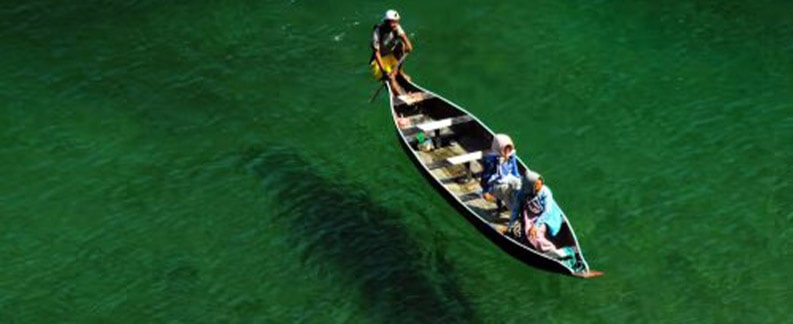
(Though the checkout time is 12 noon, every effort would be made to retain rooms till as late as possible without additional charges - subject to availability)
Following a leisurely morning, we will transfer to the Shillong airport to board the flight to Kolkata.
Meeting and assistance upon arrival, as our representative will welcome you and transfer to hotel, Calcutta Bungalow
After rest and relaxation, we take a short ride in our car to Park Street. It is said that Park Street never sleeps and is always bustling with activities. Being a major hangout spot in the city, it has many pubs and restaurants.
Park Street is a bustling commercial area with shops, malls, restaurants, pubs, etc. Many of Kolkata's famous malls are located in or near Park Street which makes it a favourite go-to for shopaholics. Quest Mall, Metro Plaza Shopping Mall, Multi brand Shopping Mall and One Squire Mall are some of the malls where one can find a variety of local and international brands to buy for themselves or to gift their loved ones. Some of the funniest boutiques are also to be found here - especially for ethnic ladies ware. As you have your car and driver available, you can choose to also visit other shopping hub of the city.
The car and driver are available to you till 11 PM. So, you can also choose to eat out. As Park Street is one of the most commercially active regions in Kolkata, one can find a number of restaurants that serve delicious local, national and international cuisine. Some of these are extremely famous for serving authentic Bengali cuisine, while others serve a variety or fusion of cuisine coming from almost all over the world. Each restaurant has managed to create a vibe with their decor and furnishings that range from classy, glamorous, and contemporary to vintage. The Park Hotel, Charcoal Grill, Peter Cat, Over The Top, Mocambos Restaurant, Khandani Rajdhani, Tung Fong Restaurant are some of the restaurants located on Park Street.
Overnight at Calcutta Bungalow, Kolkata (Jatrapara Room) (B)
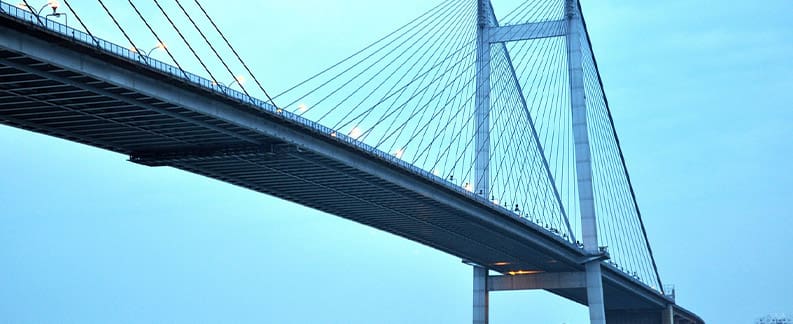
After breakfast, we will proceed on a special tour of Kolkata that will highlight the cultural potpourri of this city that is affectionately known as “City Of Joy”. We will start our tour with a visit to the Dalhousie Square from where once the British ruled the roost. The red building reminds us of a time of a colonial era which is very present even now. We will then visit the Mausoleum of Job Charnock situated in St. John’s Church where you will have an insight into the life & times of this Englishman. Job Charnock was widely known as the founder of Kolkata, but, the 2003 ruling of Calcutta High Court deniedhim the legacy. However, history will remember him with its own observation.
Then, we will have a Bazaar Tour where you get to feel the warmth of the people, the passion, and, the love for their city. First, we will visit the Flower Market, beneath the east end of Howrah Bridge; this is eastern India’s largest flower market with hundreds of stalls and people sitting on the ground. Then, we will visit the Burra Bazar area, which is a world in itself. The Marwaris from Rajasthan migrated here a long time ago, and, made it their home. Actually, you would notice a unique ecosystem where their business and, dwellings coexist in a colorful harmony. These unique bleeding’s have indeed contributed to Kolkata’s thrilling cultural legacy.
Following our Bazzar tour, we will be visiting the Synagogues of Kolkata including the Maghen David Synagogue. Built in 1884, Maghen David literally means the Shield of David. The entrance sees the Star of David, one of the three synagogues which have the most beautiful interiors. Marble floor, shiny chandeliers, and Belgium stained glass windows give this place its exotic look.
Later, we will also visit the St. Paul’s Cathedral, known as the first Episcopal Church of the eastern world. It is an Anglican cathedral of the Church of North India. Besides, being a religious site, the cathedral is also an architectural marvel. St. Paul‘s Cathedral is 247 feet in length, 81 feet in width and 114 feet at transept. The flagstaff rises to a height of 175 feet above groundlevel.
Next, we will be visiting the The Park Street cemetery. It is one of the first non-church cemeteries in the world. In the 19th century, it was known as the ‘Great Christian Burial ground’ in Asia. The cemetery was named after “Park Street” after the private deer park built by Sir Elijah Impey around Vansittart’s garden house. The cemetery served as a burial ground for the European expatriates who were settled in Calcutta during the colonial period. The cemetery houses the graves of many notable European figures of the regal era. Most distinguished tombs are those of ‘Rose Aymler’, beloved of the poet Walter Savage Langdor, Henry Louis Vivian Derozio, the initiator of the Young Bengal Movement who lived an eventful life for a short period of just 22 years; Charles Dickens’ son, Sir William Jones, founder of the Asiatic Society, Calcutta in 1796, David Drummond, C. F. Andrews and Michael MadhusudanDutta, the illustrious and anglicized poet of Bengal.
We will also be visiting the Victoria Memorial, the exquisite marble building of Victoria Memorial stands tall in all its glory. As beautifully it is designed as carefully it has been curated and looks picturesque during the dusk as well as in the sunrise. Also, the Victoria Memorial Hall exhibits some of the finest collections of paintings from the colonial era. From portraits of eminent colonial administrators to paintings of Indians princes and rulers, the collection exhibits a diverse range of themes and mediums.
Later, following our tour, we will also visit Mother Teresa’s 'Missionaries of Charity'. Kolkata, apart from housing several worship places, also houses the sacred sanctum of social work, called 'Missionaries of Charity'. It is essentially a Roman Catholic religious order, founded in 1950, by Mother Teresa in Kolkata (then Calcutta), which works for the poor and destitute. Started with just 12 volunteers, this order has now spread to 133 nations of the world, with about 4,500 permanent women volunteers called 'Sisters'. ‘Missionaries of Charity’ in Kolkata works for the real needy and deprived section of society. It helps the sick, orphans, lepers, AIDS victims, abandoned elderly, mentally challenged people, refugees and ex-prostitutes. The charity has 19 homes in Kolkata; each of them working for a specific cause, e.g. NirmalHriday - the home for pure heart, working for the sick, dying and destitute in the city of Kolkata. Other homes include Shanti Nagar - the city of peace, meant for leprosy patients and NirmalaShishuBhawan, meant for orphaned kids. The Missionary also works for educating the street children of Kolkata.
Overnight at Calcutta Bungalow, Kolkata (Jatrapara Room) (B)
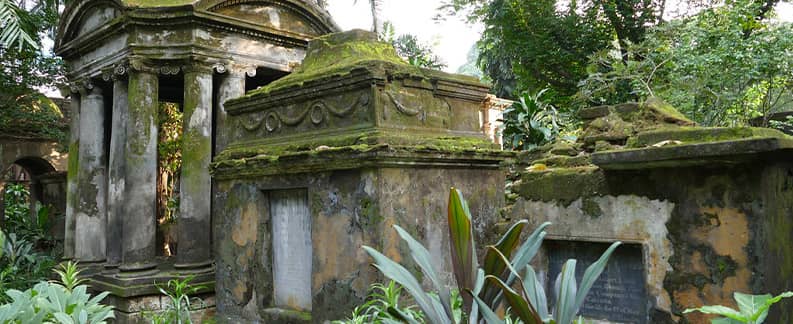
Following a leisurely breakfast, we will visit Kumartuli. This unique artisan village dates back 400 years, making it perhaps the oldest of its kind in the world. It is the lifeblood of Bengal‘s biggest festival and keeps the Puja fervor alive among Bengali communities in other countries. Around 250 artists work to produce 40,000 idols a year, including 3500 images of Durga. With more than a thousand workers assisting the artisans, Kumartuli is a mini industry. It exports 50 Durgaidolsto virtually all corners of the world, including UK, USA, Canada, Germany and Switzerland.
We will also be visiting the beautiful marble palace. Built in 1835 by a Raja from the prosperous Mallick family, this resplendent mansion is as grand as it is curious. Its marble-draped halls are overstuffed with dusty statues of thinkers and dancing girls, much Victoriana, ample Belgian glassware, game trophies and fine paintings, including originals by Murillo, Reynolds and Rubens.
We will then visit the College Street Book Market, Kolkatans are well-known for their passion for books and this area is a treasure for the book lovers of the city - you can find of them every day spending hours browsing through the loads of new books or bargaining for buying a second hand one. Some of the Kolkata‘s most renowned academic institutions like Kolkata University, Presidency College, Kolkata Medical College and Sanskrit College are also located in this street. Closed on Sunday & National Holidays.
We will then visit the Indian Coffee house and get engaged in an informal chat session with university students. Also known as "Albert Hall", this is the most favourite gathering place for the writers, intellectuals, artists and students for many decades. Casual chatting for hours about any issue is the most favourite social activity of any Bengali and here in this large historical and legendary café, entire day you can find hundreds of Kolkatan's are busy discussing about their favourite issue over a cup of coffee.
Following our engaging session at Coffee House, we will now take a Tram ride from College Street to Bhim Chandra Nag sweet shop, deboard the tram and savour traditional Bengali sweets at this heritage sweet shop. They specialize in a mouth-watering sweet called Ledikeni, a light reddish-brown fried sweet ball made of chena and flour and soaked in sugar syrup. The sweet was first prepared by Bhim Chandra Nag for Lady Canning, the wife of Charles Canning - the Governor-General of India during 1856-62. Ledikeni, a unique variation of gulabjamun (North Indian Delicacy), originated in the mid-19th century.
Overnight at Calcutta Bungalow, Kolkata (Jatrapara Room) (B)
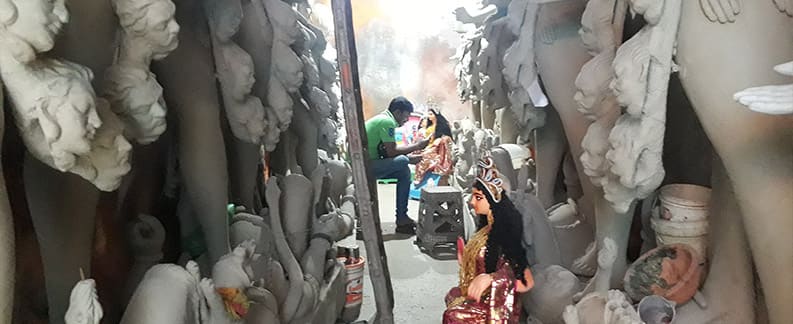
After breakfast, we will drive to Bawali Rajbari (Royal Palace) where life is undisturbed & kind. There, we will witness the royal past as well as the greener side of Bengal.
(Though check in time is 2pm, every effort would be made to ensure an as early as possible check in – subject to availability)
Upon arrival, check into the 300-year-old palace previously belonging to the Zamindars (Landlords) of Bengal during the British Raj - the Bawali Rajbari. Situated in the verdant country around Kolkata, this is where you can relax, unwind, and rejuvenate yourself. Moreover, this beautiful palace hotel allows you to get back into the lap of nature, far from the madding crowd, but never too far from comfort and luxury. Each of the 30 spacious rooms is well equipped with striking carved stone floors, antique furniture, and wooden furnishings.
In the afternoon, we will walk through the countryside around Bawali Rajbari where you will get to hear the different echoes coming from far & wide, and also you will witness the ancient temples, the generous ‘pukurs’ (small fish ponds), the village sounds of temple bells, and, the hustle of evening chores. Here, you will also observe that despite a mobile phone in every villager’s hand, time seems to have stalled, the pace seems slower and nature spreads her tranquil touches everywhere. All in all, you will experience the romance and the spirituality of being a part of the world that is long lost to our times.
Overnight at Bawali Rajbari (Classic Heritage) (B)
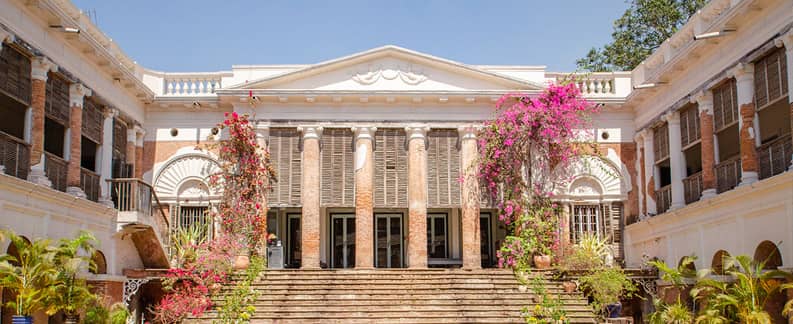
Day free for self-exploration (No guide).
The Rajbari Bawali is surrounded by 5 Krishna temples that date back to about 500 years. This morning, you could explore these beautiful temples and experience the sound of bells, drums, chants, and the smell of freshly lit incense sticks. A truly uplifting experience. A guide can be arranged through the hotel, or , we could pre arrange this and include in our quotes.
Optional: A late afternoon cruise on country made boats on the Hooghly to catch sunsets and visits to local textiles are not to be missed.
As we return to our palace, every evening at Bawali Rajbari begins with the ‘sondhyaarti (traditional ritual)’ at dusk to the roll of drums and chants, and continues onwards to various performances like dances by a local dance troupe, of singing by the wandering Bauls of the region and a display of the energetic Bengal drums.
Overnight at Bawali Rajbari (Classic Heritage) (B)
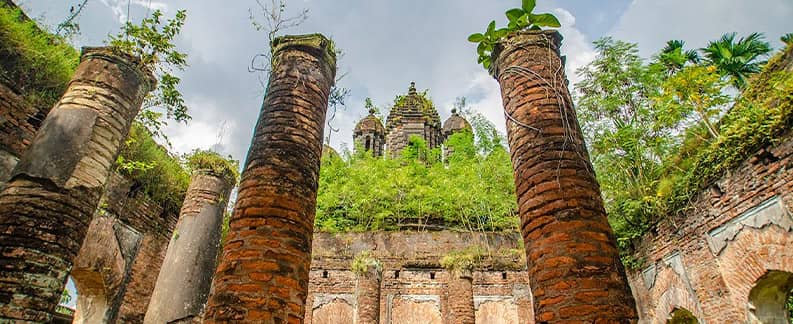
Following a leisurely breakfast, we will drive to Kolkata airport to board the flight to Bhubaneshwar.
Meeting and assistance upon arrival, as our representative will welcome you and transfer to Welcomhotel By ITC Hotels.
Overnight at Welcomhotel By ITC Hotels, Bhubaneshwar (Deluxe Room) (B)

After breakfast, we will proceed to visit the ancient rock edict of Emperor Ashoka, Hirapur 64 Yogini temple and the Jain caves of Khandagiri – Udaigiri.
Dhauli – Ashoka(reign ca. 272-231 BC) was the most illustrious king of the Maurya dynasty. After his conquest of the kingdom of Kalinga in modern day Odisha, struck with remorse at the suffering he caused, Ashoka converted to Buddhism and spent the rest of his life propagating his dharma (law). In order to achieve this, he had numerous edicts inscribed on rocks, pillars and caves, throughout his vast empire. These are written in various vernaculars and represent the earliest written document from the Indic regions. From these edicts it would appear clear that Ashoka was an extremely tolerant and benevolent monarch.
Near Dhauli, south of Bhubaneshwar, there is a rock inscribed with the edicts of the emperor Ashoka. The front of the rock is sculpted as the head, trunk and front legs of an elephant.
The Shanti Stupa at Dhauli Hills is a significant symbol of love and peace. The pilgrimage is significant because here King Ashoka resigned from violent wars. After witnessing the devastating sight of blood filled land and the Daya River that obtained red color because of the merciless slaughter of around 1,50, 000 warriors, King Ashoka was filled with sheer grief and therefore decided to renounce wars completely all through the rest of his life. It is at Dhauli that Ashoka resorted to Buddhism and presented his sword in front of Lord Buddha.
Hirapur 64 Yogini Temple – Hirapur – Onthe outskirts of Bhubaneswar, 15 km south-east of the city, is a small, circular temple, the Yogini Temple, dating to the early ninth century. It is hypaethral (open to the sky), and belongs to a genre of architecture completely apart from the major Odishan school. Although it seems that temples of this type existed throughout India at one time, today only four remain. Two of them are in Odisha; the shrine at Hirapur, and one in the far western reaches of the state, at Ranipur-Jharial.
Afternoon, we will visit the ancient caves of Khandagiri and Udaygiri which were carved and tunneled, to create this multi-storied ancient apartment residence for Jain monks. They were the work of the first known Odishan ruler, King Kharavela, and probably begun in the first century BC. Kharavela was a king of the Mahameghavahana dynasty, who is known for expansion of the Kalingaempire and his installation of public improvements, such as canal systems. His queen was evidently quite a patron of the arts, and probably had much to do with the impressive sculptural decoration of the caves.
Overnight at Welcomhotel By ITC Hotels, Bhubaneshwar (Deluxe Room) (B)
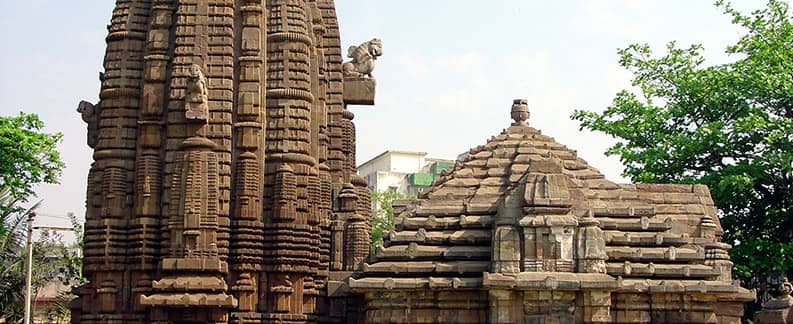
After breakfast, we will drive to Puri enroute Pipli and Konark.
We will first visit the village of Pipli which has the monopoly on appliqué, and other craft rooted in the Jagannath cult. Geometric motifs and stylized birds, animals and flowers are cut from brightly coloured cloth and sewn onto black backgrounds. Pipli artists are responsible for the chariot covers used in the RathYatra (The famous Car Festival of Odisha) as well as for the small canopies, or chhatris, suspended above the presiding deity in Odishan temples.
Next, we proceed to visit the famous Sun Temple at Konarak.
The grandest of Orissa’s temples is Konark Sun Temple. The UNESCO World Heritage Site is 66 km (41 miles) from Bhubaneswar and best visited en route to the nearby town Puri, on the east coast. Set on a tree- lined lawn, the temple represents a chariot of the sun god, complete with 24 carved wheels. Every visible surface is sculpted, telling a complex narrative of the religious, political and social life of the people who lived in 13th-century Orissa. The craftsmanship of the temple is so impressive
— the usually reserved UNESCO board called it ‘a masterpiece of creative genius’ — that stories of its master builder, BisuMoharana have gone down in local legend. Also, visit the local Fishermans village and interact with the local community.
Later, we will proceed to Puri.
As the home of Lord Jagannath and his siblings, Puri ranks among Hindu India’s most important sacred sites, visited by a vast number of pilgrims each year. The crowds peak during the monsoons for RathYatra, the famous “Car Festival”, when millions pour in to watch three giant, multicoloured chariots being drawn up the main thoroughfare. At the centre of the maelstrom, the Jagannath temple soars above the town’s medieval heart and colonial suburbs. Non- Hindus and Foreign Nationals aren’t allowed inside the temple, but don’t let this deter you; Puri’s streets and beach remain the focus of intense devotional activity year round, while its bazaars are crammed with collectable souvenirs associated with Indian Mythology.
Following the tour, we will check in to, Pride Ananya Resort.
Overnight at Pride Ananya Resort, Puri (Deluxe Room) (B)
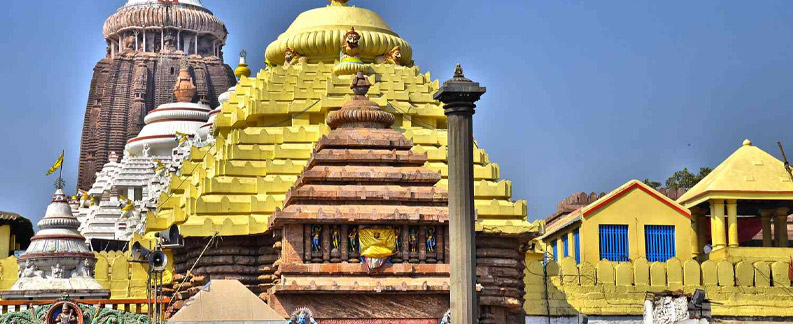
After breakfast, we will drive to Daringbadi enroute visiting Chilika Lake (Mangalajodi community village)
Avast lake along the eastern cost of Odisha with beautiful islands, migratory birdses wading in the shallow waters and the air echoing with the chirping of birds from as far as the Caspian Sea, Aral Sea and other parts of Mongolia, Central and South-East Asia, that’s the breath-taking beauty of Chilika-Asia’s largest brackish water estuarine lake.
Chilika sprawls over an area of 1100 sq.km covering parts of three districts of Odisha i.e. Puri on the east, Khurdha on the North and Ganjam on the South. It’s a haven for bird-watchers / nature lovers. Abounding in unique flora and fauna, Chilika supports the livelihood of more than hundred thousand families living in and around it. Winter is the best time to visit Chilika as over 160 species of migratory birds flock the islands during this time of the year.
A community owned and managed wildlife conservation venture, Mangalajodi Ecotourism is your destination to get a peep into Mother Nature. Mangalajodi is a village located on the northern banks of Chilika Lake in Odisha, ‘The Bird’s Paradise’ hosts more than 3,00,000 birds in its marshy waters, especially in winters. Mangalajodi also represents one of its kind ecosystems, whose protection is epitomized by a sustainable lifestyle that is at a brink of extinction in urban settings.
Later, we will enjoy a country boat ride at Mangalajodi. Also visit the Mangalajodi village and interact with the fishing families.
Following, we will continue our drive to Daringbadi enroute visiting traditional farming village.
We arrive in the evening and check into Daringbadi Nature Camp
Overnight at Daringbadi Nature Camp (Non Airconditioned- Standard Room) (B & D)
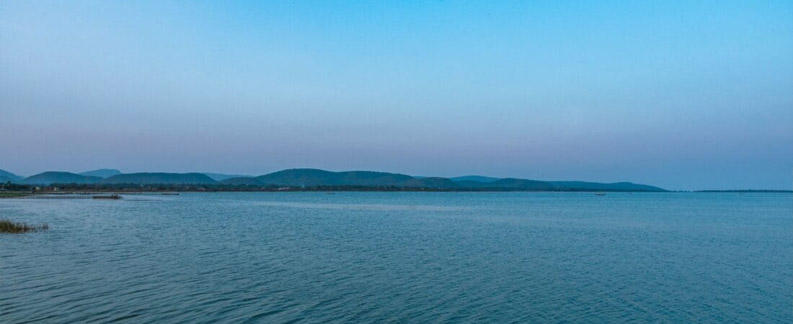
After breakfast, we will drive to Rayagada enroute visiting KutiaKondh Tribe & Tuesday weekly tribal market and their local village.
The Kondhs are one of the well known tribes of Odisha who were famous in history for their Meriah–Human Sacrifice.They are found almost in all the districts of Orissa but mostly concentrated in large numbers in Phulbani, Koraput and Ganjamdistricts. Kondh’s life is full of festivities. The important festivals are at the time of sowing and harvesting. During festivals, feast is accompanied by singing, dancing and drinking. At the time of sowing seeds they worship DharaniDeota and make animal sacrifice to ensure good crop. The village women sing and dance joining hands and the boys standing around also sing and the entire atmosphere becomes joyous. During Sarupenufestival they resort to worship on the hills and enjoy the day with feasting and dancing. Their weapon is bow and arrow by which they defend themselves from wild animals.
Following, we will continue our drive to Rayada.
We arrive in the evening and check into Hotel Sai International or Similar.
Rayagada is a district of meadows, forests, waterfalls and terraced valleys, thickly inhabited by colorful ethnic and tribal groups. The scenic beauty and heritage on the land is an unexplored paradise. The systematic relationship between men and nature is a feast to the eyes of an outsider.
Overnight at Hotel Sai International or Similar (B, L & D)
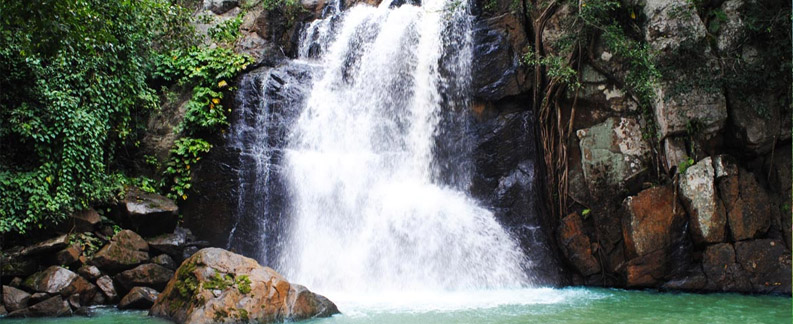
After breakfast, we will visit the weekly Wednesday market of the Dongriya Kondhas at Chatikona. Here the DongariyaKondhas trek down from their villages up the Hill with forest produce to sell or barter with non-tribals. DongariyaKondhas are one of the original ethnic tribal groups of Orissa who have retained their culture and tradition till date. The Dongria family is often nuclear, although extended families are found. Female family members are considered assets because of their contribution inside and outside the household and women are on equal footing with the male members in constructing a house to cultivation. Women do all the work for household ranging from fetching water from the distant streams, cooking, serving food to each member of the household to cultivating, harvesting and marketing of produce in the market. Due to this, the bride price is paid to her parents when she gets married which is a striking feature of the Dongrias.
After lunch, we will drive to Jeypore enroute visiting Desia Kondh tribe and village.
Upon arrival check into Hotel Hello Jeypore or Similar.
Overnight at Hotel Hello Jeypore or Similar (B, L & D)
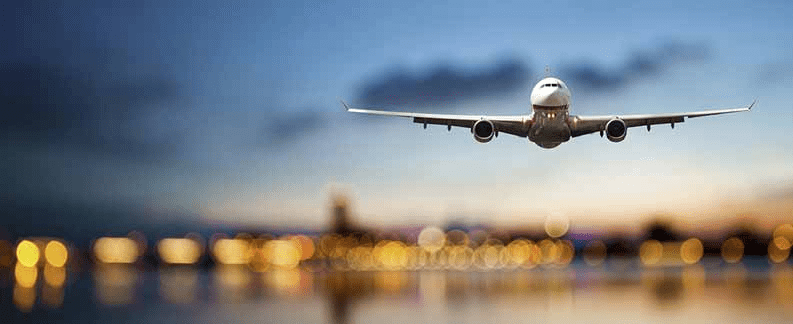
After breakfast, we will visit the weekly Thursday market of the Bondas at Onkudelli and also spend some time at the nearby Duduma waterfall and enjoy the spectacular view of the mountains and valleys close to the nature.
Nature has showered its bounty on the undivided Koraput district replete with meadows, forests, waterfalls, terraced valleys and darting springs. This land of abundance is home to Odisha's vast tribal population. A real paradise for the nature-lover, Jeypore offers an additional benefit to the visitor of first hand meeting with its ancient civilization.
Next, we will visit the home of the approximately 6000 members of the famed Bonda Tribes–one of the most fascinating tribes of the Country. They live in the remote hills and keep themselves isolated. They grow rice by shifting cultivation and keep domesticated cows and goats. They can only be seen when they come to trade at the local weekly Thursday market. The Bonda women are noticeable by the chunks of beaded necklaces that cover their upper body, striking brass and silver necklace and their shaved heads decorated with colorful beads.
In Bonda society, the women enjoy a privileged position. They are the primary workers and providers of food for the community. Bonda girls largely marry boys who are at least five to ten years younger than them. Thus the girl looks after her husband as he grows up and in turn he cares for his elder wife. In contrast with many other populations in India, the number of women among the Bondas greatly exceeds the number of men.
Later, we will visit another ethnic tribal group of the Gadabbas. Both men and women tie their long hairs with linseed oil and decorate it with forestry flowers and different ornaments. The women wear a long strip of cloth tied around the waist and a second piece of cloth is worn across the breasts and tied over one shoulder.
Overnight at Hotel Hello Jeypore or Similar (B, L & D)
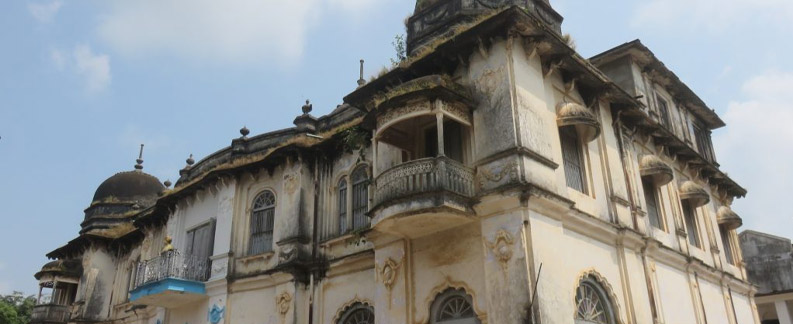
After breakfast, we will visit another interesting Paraja tribe assembles at Kunduli every Friday and the Korpaut temple. The Parajas are divided into different sub-groups viz., Sodia, Jadia and Parenga; each of them seems to be a separate ethnic group. The Parajas have a number of totemisticsepts like Bagh-tiger, Bokda-goat, Netam-Dog, Pandki-Dove, and the like, and harming or eating the totem animal is forbidden. Instead such animals should be respected. They also worship various gods and goddesses residing in hills or forests.
Following, we will drive to Vishakapatnam en route visiting typical Andhra village and temples
As you drive past the last scenic stretch of Odisha you subconsciously dwell and try to ascertain the life of a tribal who in spite of being diametrically opposite to the urban man is more adept in upholding the ethos of society by protecting Mother Nature and its bounty. The sheer prominence of women and the tremendous respect they garner in their community is a right they are entitled to and not one to be struggled for as in the Cosmopolis city.
Simhachalam Temple– Thehill of the lion is located at a distance of 18 km from Vishakapatanam refers to the 11th century temple of Lord Narasimha - an incarnation of Vishnu. Millions of devotees from round the world visit this temple every year. The presiding deity here is Varaha Lakshminarasimha, combining the iconographic features of Varaha and Narasimha. The image resembles a Shivalingam covered with sandal paste. It is only once a year, during the ChandanaVisarjana that the sandal paste is removed, and the image is seen by pilgrims. The artwork here has elements of similarity with that of Konark. Elephants, flowers and plants are portrayed in plenty. The outer walls of the sanctum depict images of a royal personality (said to be King Narasimha) in various postures. The Kalyana Mandapa within the temple has 16 pillars with bas relief depicting the incarnations of Vishnu.
Following our visit, we will continue our drive to Vishakhapatnam.
Upon arrival, check into hotel, WelcomhotelBy ITC Hotels, Devee Grand Bay.
Overnight at WelcomhotelBy ITC Hotels, Devee Grand Bay, Vishakhapatnam (Deluxe Room) (B)
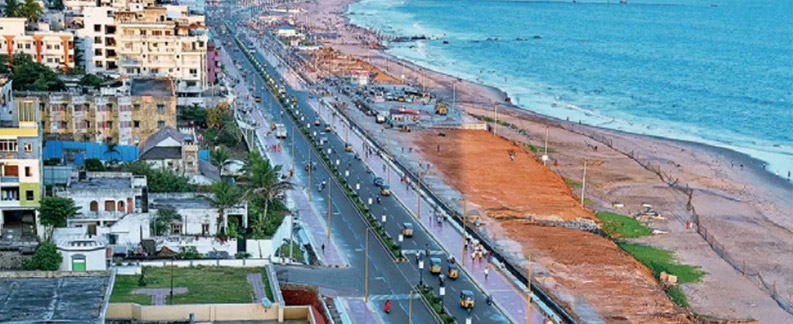
(Though the checkout time is 12 noon, every effort would be made to retain rooms till as late as possible without additional charges - subject to availability)
In time, we will transfer to the international airport to board the onward flight.
NO HOTEL QUOTED FOR THIS DAY (B)

Copyright © 2016 - 2023, Trinetra Tours Pvt Ltd. Powered By DigiLantern

